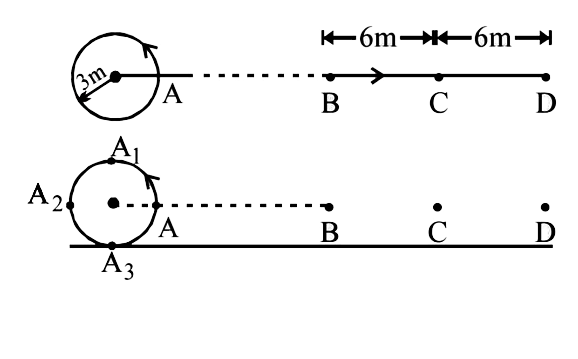An observer moves towards a stationary source of sound, with a velocity one-fifth of the velocity of sound. What is the percentage increase in the apparent frequency?Solution in Gujrati
zero
0.005
0.05
0.2
The correct Answer is:D
Given that vobserver=vsound5
Applying Doppler's effect, we get
f'=f[v+v0v],f'=f[6v/5v]=65,f'f=65
f'−ff=65−1=15=20%.
Topper's Solved these Questions
- WAVES AND OSCILLATIONSBOOK - ALLEN CHAPTER - WAVES AND OSCILLATIONSEXERCISE - Part-1(Exercise-05)[B]
42 Videos
- WAVES AND OSCILLATIONSBOOK - ALLEN CHAPTER - WAVES AND OSCILLATIONSEXERCISE - Part-1(Exercise-04)[B]
13 Videos
- SEMICONDUCTORSBOOK - ALLEN CHAPTER - SEMICONDUCTORSEXERCISE - Part-3(Exercise-4)
50 Videos
Similar Questions
A string of length 0.4m and mass 10−2kg is clamped at one end . The tension in the string is 1.6N. The identical wave pulses are generated at the free end after regular interval of time , Δt . The minimum value of Δt , so that a constructive interference takes place between successive pulses is
View SolutionA source of sound is moving along a circular orbit of radius 3meter with an angular velocity of 10rad/s. A sound detector located far away from the source is executing linear simple harmonic motion along the line BD with an amplitude BC=CD=6meters. The frequency of oscillation of the detector is 5π per second. The source is at the point A when the detector is at the point B. If the source emits a continuous sound wave of frequency 340Hz, Find the maximum and the minimum frequencies recorded by the detector.

View SolutionAt absolute zero temperature Si acts as ……..
View SolutionWhat should be the velocity of a sound source moving towards a stationary observer so that apparent frequency is double the actual frequency (Velocity of sound is v )
View SolutionAn observer moves towards a stationary source of sound. The percentage change in the apparent frequency is
View SolutionIf an observer moves towards a stationary source of sound with a velocity of one tenth the velocity of sound, then the apparent increase in frequency will be
View SolutionThe velocity of sound in air is 330 ms^(-1) . To increase the apparent frequency of the sound by 50%, the source should move towards the stationary observer with a velocity equal to
View SolutionA source is moving towards a stationary observer, so that the apparent frequency increases by 50%. If velocity of sound is 330 m/s, then velocity of source is
View SolutionWrite the expression for apparent frequency for source of sound moving towards a stationary observer.
View SolutionIf an observer is moving with uniform velocity v to wards a stationary source of frequency n, and if the velocity of sound in the medium is V, then the apparent change in the frequency of the sound, heard by the observer, is -
View SolutionAn observer moving towards a stationary source observes that the apparent frequency is three times the actual frequency of the source. If the velocity of sound is V, the velocity of the observer would be-
View Solutionकोई प्रेक्षक किसी स्थिर ध्वनि - स्रोत्र की और ध्वनि में वेग के 15 वे वेग से गतिकर्ता है। आभासी आवृत्ति में प्रतिशत वृद्धि होगी -
View SolutionAn observer moves towards a stationary source of sound with a velocity one-fifth of the velocity of sound. Calculate the percentage increase in the apparent frequency?
View SolutionAn observer moves towards a stationary source of sound, with a velocity one-fifth of the velocity of sound. What is the percentage increase in the apparent frequency?
View Solutionएक प्रेक्षक, स्थिर स्त्रोत की ओर ध्वनि के वेग के 1/10 वेग से गति करता है तो आभासी आवृत्ति में प्रतिशत वृद्धि होगी।
View SolutionAn observer moves towards a stationary source of sound with a velocity one-fifth of velocity of sound. The percentage increase in apparent frequency is
View Solution
